This site uses affiliate links, meaning that if you make a purchase through our links, we may earn an affiliate commission.
The visit to Egyptian Museum in Cairo is simply overwhelming! The Museum houses the world’s largest collection of Pharaonic antiquities consisting of more than 120,000 items (with a representative amount on display and the remainder in storerooms). To see it all, would take you days!
To make it manageable, here are 19 must-see things at Egyptian Museum. PLUS, things you need to know before going to the museum.
- 1. The Absolute 19 Must-See Things at Egyptian Museum, Cairo
-
- 1.1. Mask of Pharaoh Tutankhamun
- 1.2. Narmer Palette
- 1.3. The Ka-aper Statue
- 1.4. The Statue of Djoser
- 1.5. The Statue of Triad: Menkaure, Hathor, and Goddess
- 1.6. The Statue of Khafre
- 1.7. The Statue of Khufu
- 1.8. The Statues of Prince Rahotep and His Wife Nofret
- 1.9. The Colossal Statue of Amenhotep III and Tiye
- 1.10. Funerary Masks of Yuya and Thuya
- 1.11. The Statue of Seated Scribe
- 1.12. The Gold Chest with Canopic Jars
- 1.13. The Head of Hatshepsut
- 1.14. Statue of the Dwarf Seneb And His Family
- 1.15. Ancient Egyptian Jewelry
- 1.16. King Tut's Rooms
- 1.17. Death Mask of Psusennes I
- 1.18. Mummy Rooms at Egyptian Museum
- 1.19. Animal Mummy Rooms at Egyptian Museum
- 2. Intrepid Scout's Practical Tips to Know Before You Go to Egyptian Museum
The Absolute 19 Must-See Things at Egyptian Museum, Cairo
Mask of Pharaoh Tutankhamun
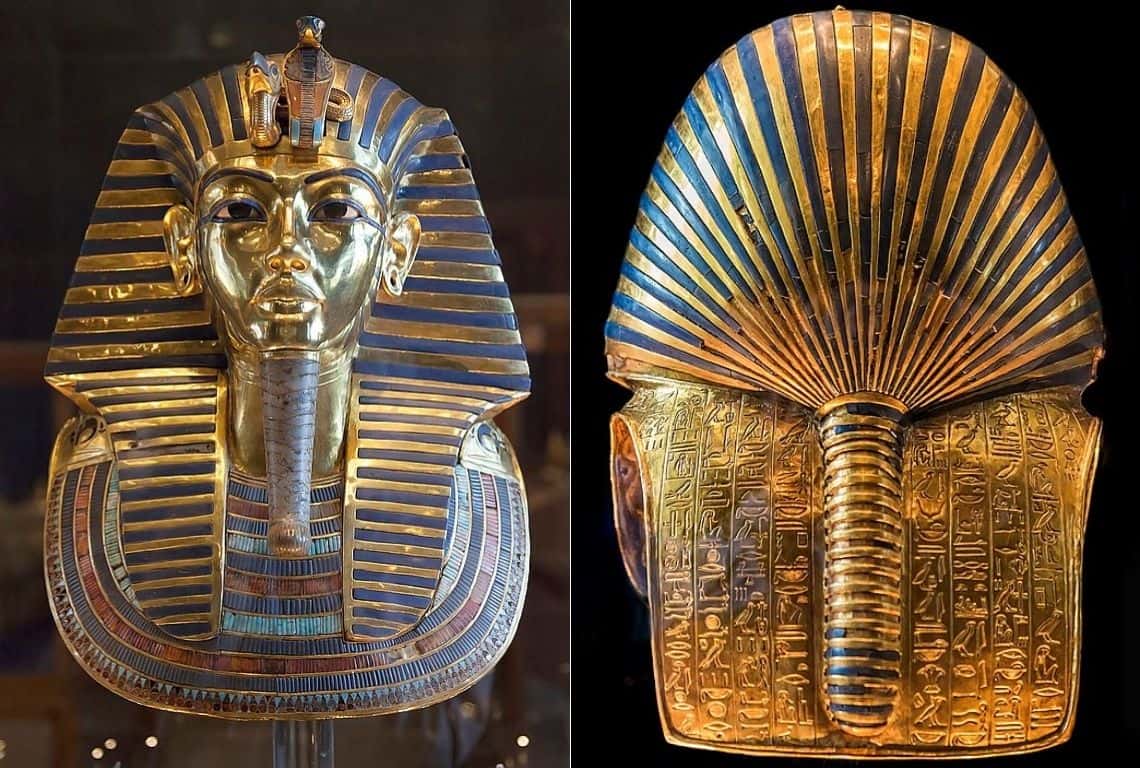
The most famous item in Egyptian Museum is the gold mask of the 18th-dynasty Pharaoh Tutankhamun. A protective spell is inscribed on the back of the mask.
Must-See Things at Egyptian Museum
The most famous item in Egyptian Museum is the gold mask of the 18th-dynasty Pharaoh Tutankhamun.
It was discovered by Howard Carter in 1925 in tomb KV62 in the Valley of the Kings. What you need to know about the gold mask of the 18th-dynasty Pharaoh Tutankhamen:
- The mask is 54 cm (21 in) tall, 39.3 cm (15.5 in) wide, and 49 cm (19 in) deep.
- It is made from two layers of high-karat gold. It weighs 10.23 kg (22.6 lb).
- The mask depicts Tutankhamun wearing a striped headcloth (nemes) with two large flaps hanging down behind the ears and in front of both shoulders.
- It is topped by the royal insignia of cobra and vulture, which symbolize Tutankhamun’s rule of both Lower and Upper Egypt.
- The mask has inlays of many precious gemstones.
- A protective spell is inscribed on the back of the mask.
Narmer Palette
The Narmer Palette was discovered by British archeologists James E. Quibell and Frederick W. Green, at the Temple of Horus at Nekhen, during the dig season of 1897–98.
It dates from about the 31st century BC. The Egyptologist Bob Brier has referred to the Narmer Palette as “the first historical document in the world”.
The tablet is thought by some to depict the unification of Upper and Lower Egypt under King Narmer.
Narmer was an ancient Egyptian pharaoh of the Early Dynastic Period. Many scholars consider him the unifier of Egypt and founder of the First Dynasty and in turn the first king of a unified Egypt. A majority of Egyptologists believe that Narmer was the same person as Menes. Source: Wikipedia
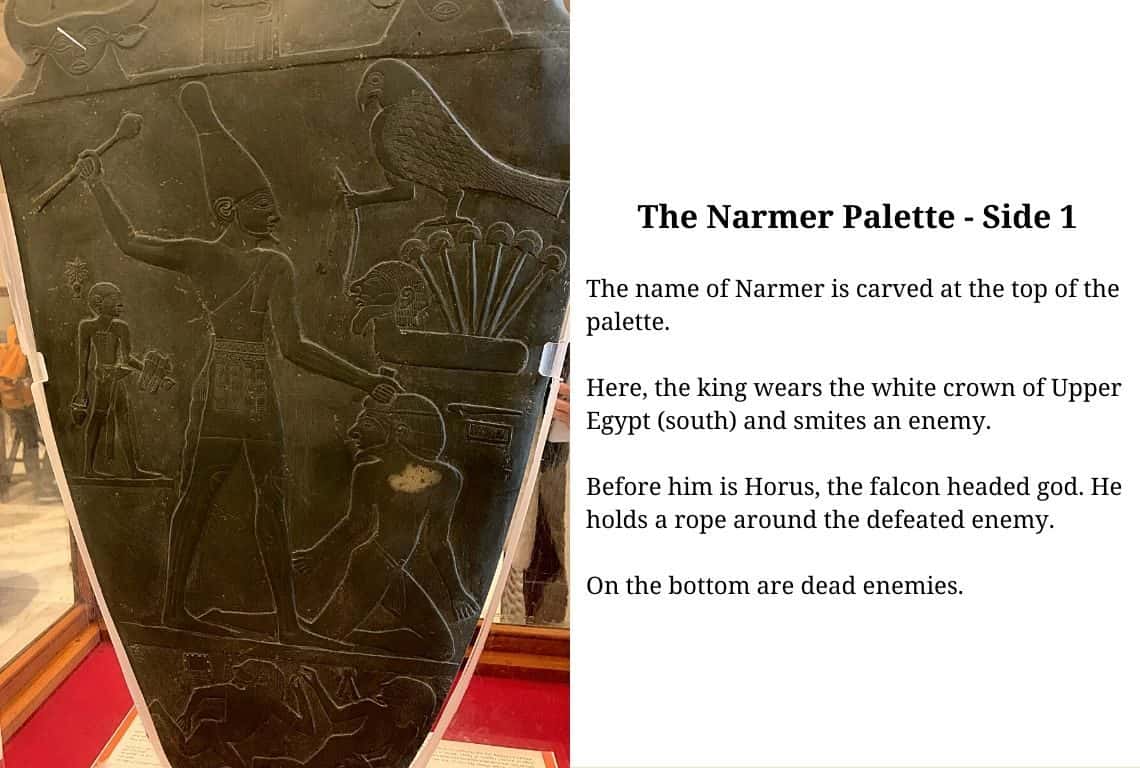
Narmer Palette is one of the must-see things at Egyptian Museum, Cairo.
Must-See Things at Egyptian Museum
The Narmer Palette belongs to the category of cosmetic palettes.
Cosmetic palettes were used in predynastic Egypt to grind and apply ingredients for facial or body cosmetics.
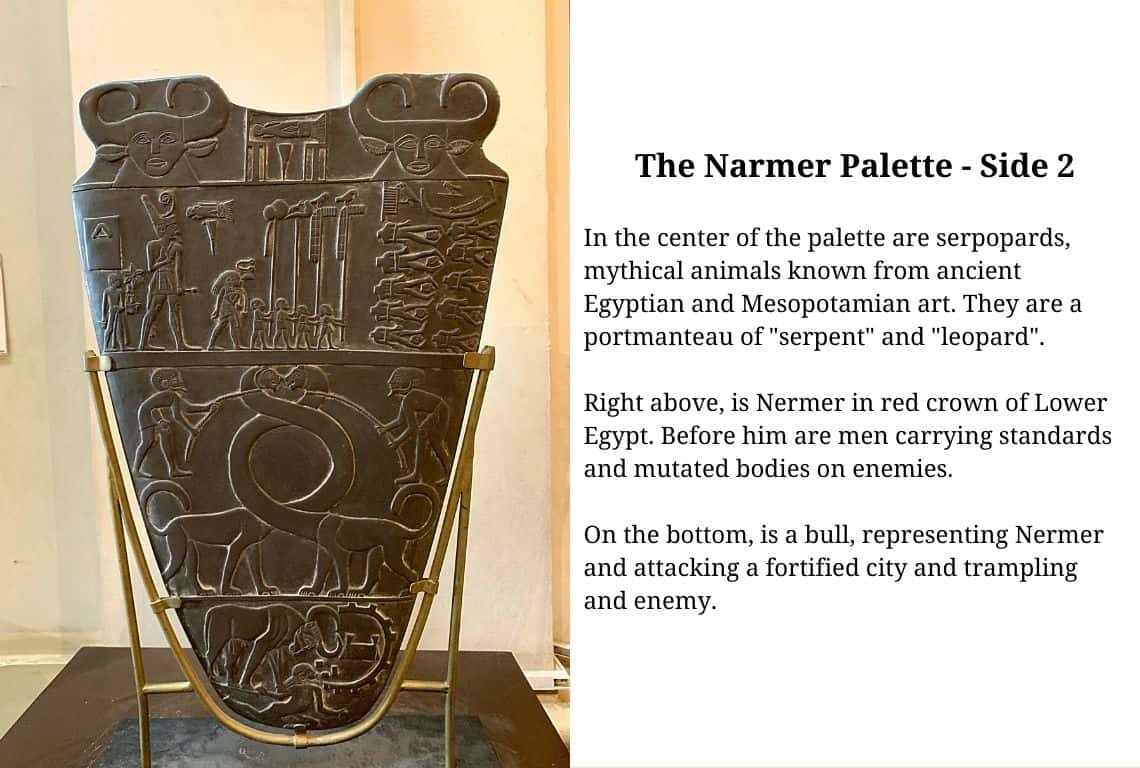
The Egyptologist Bob Brier has referred to the Narmer Palette as “the first historical document in the world”.
Must-See Things at Egyptian Museum
The Ka-aper Statue
The Ka-aper statue is one of the masterpieces of the Old Kingdom. It dates back to 2540-2505 BC. It is definitely one of the must-see things at the Egyptian Museum.
It was carved out from sycamore wood. It depicts Ka-aper who was the chief lector priest in charge of reciting prayers for the dead in temples and funerary chapels.
The statue was excavated in Saqqara Mastaba of Ka-aper by Mariette in 1870.
Moreover, the statue is known as Sheikh el-Balad. The Arabic name was given to him by Mariette’s workers.
What makes this statue so realistic are the eyes. They are made out of rock crystals and small copper plates.
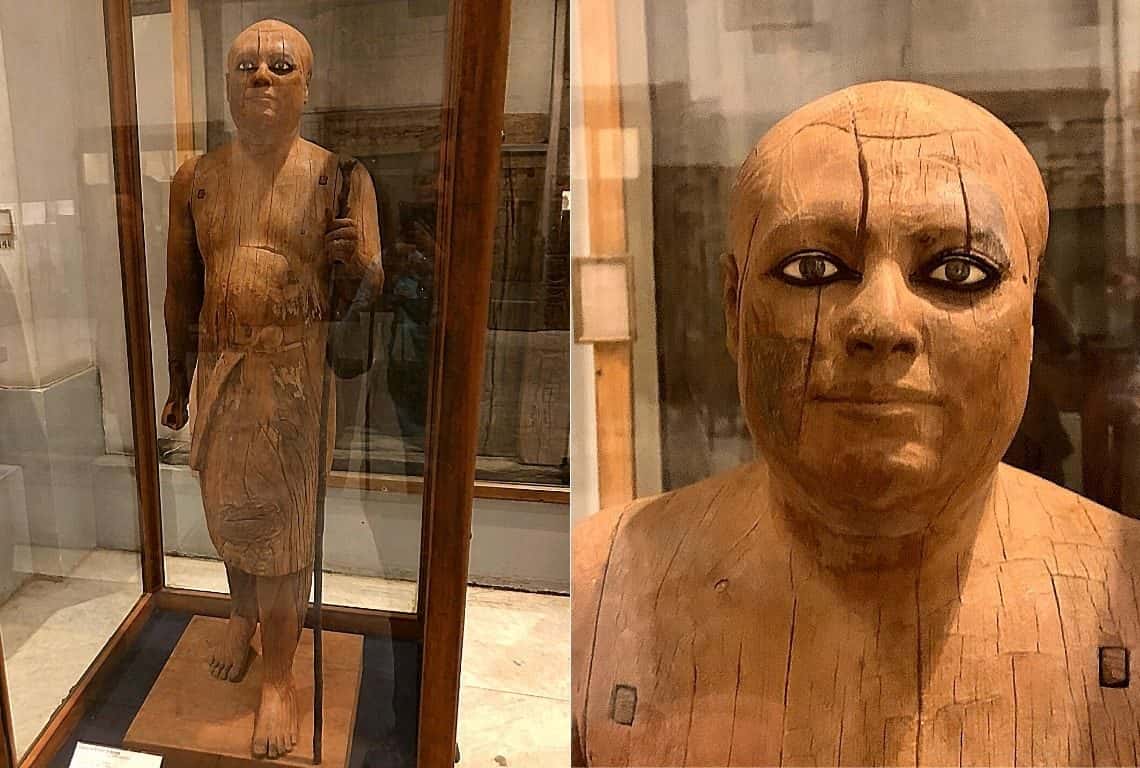
The statue of Ka-aper was carved out from sycamore wood. It depicts Ka-aper who was the chief lector priest in charge of reciting prayers for the dead in temples and funerary chapels.
Must-See Things at Egyptian Museum
The Statue of Djoser
Djoser was an ancient Egyptian pharaoh of the 3rd Dynasty during the Old Kingdom and the founder of this epoch.
The painted limestone statue of Djoser is the oldest known life-sized Egyptian statue. It was found in Saqqara during the Antiquities Service Excavation of 1924-1925.
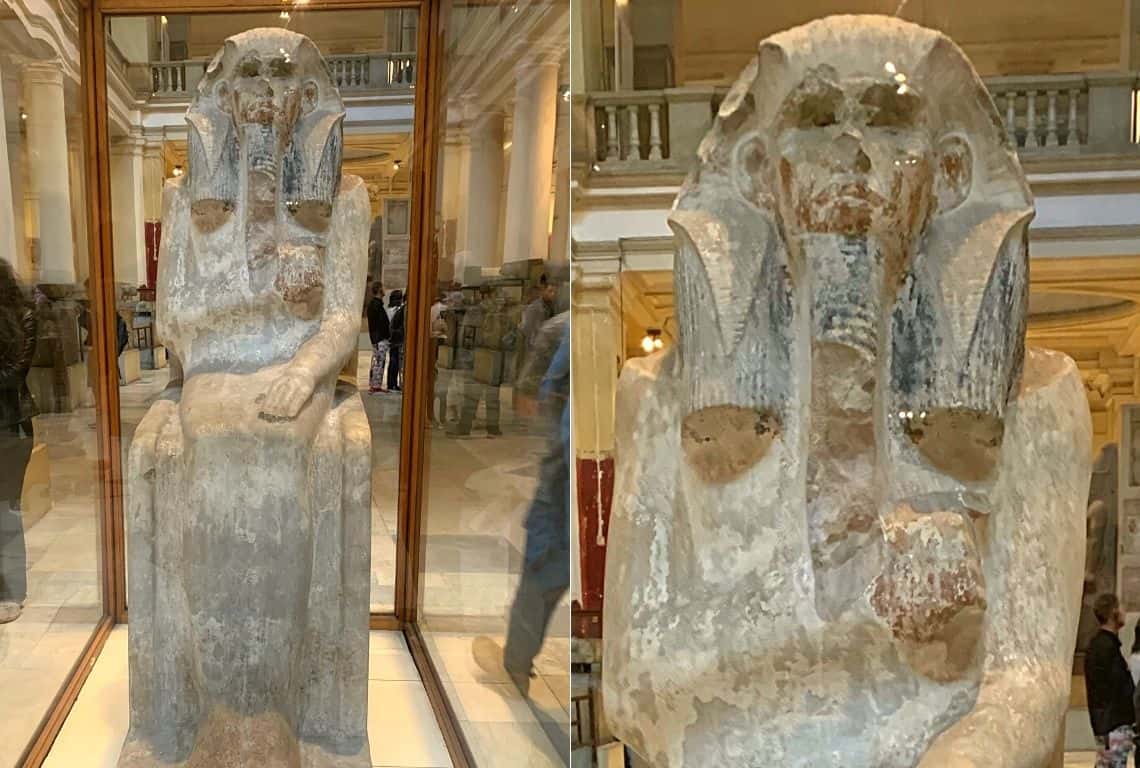
The painted limestone statue of Djoser is the oldest known life-sized Egyptian statue. It was found in Saqqara during the Antiquities Service Excavation of 1924-1925. Hands down, it is one of the must-see things at Egyptian Museum in Cairo.
Must-See Things at Egyptian Museum
The Statue of Triad: Menkaure, Hathor, and Goddess
Four of these triads were excavated by G.A. Reiner between 1908 and 1910 in Giza at the Valley Temple of Menkaure.
This triad represents king Menkaure wearing the tall white crown of Upper Egypt.
On his right is Hathor, the great sky goddess and divine mother of the king. On his left is the patron deity of the Bat nome.
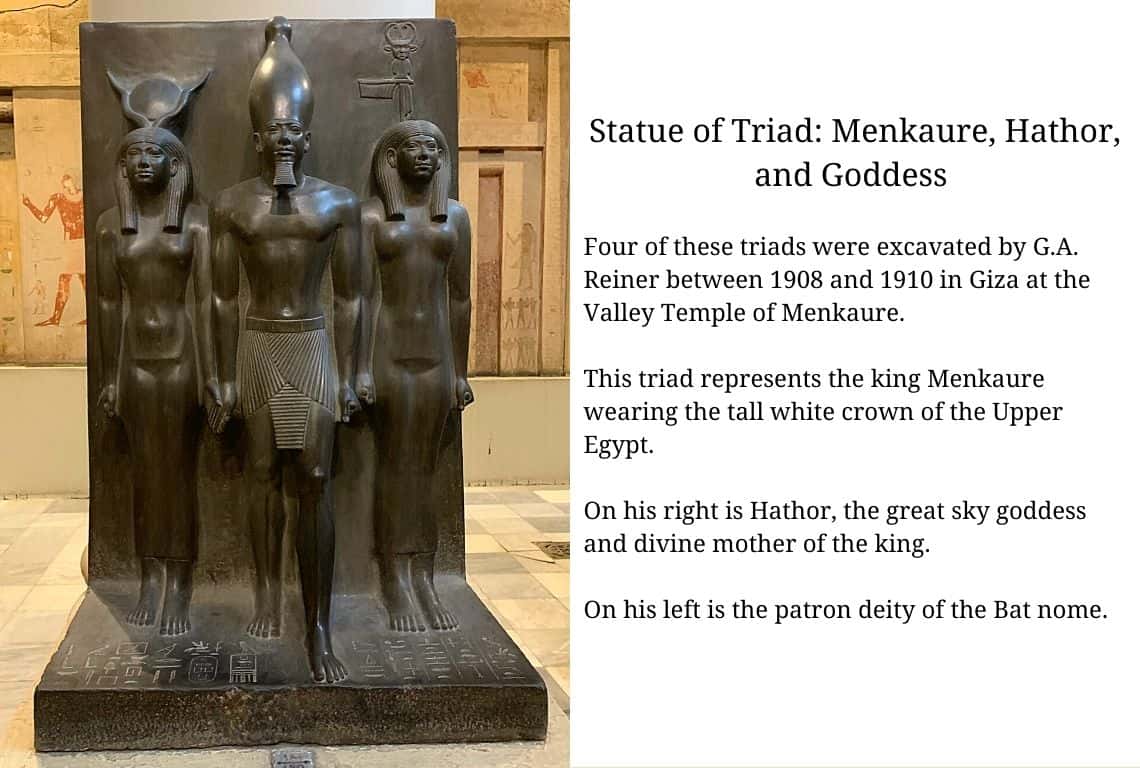
This triad represents king Menkaure wearing the tall white crown of Upper Egypt. On his right is Hathor, the great sky goddess and divine mother of the king. On his left is the patron deity of the Bat nome.
Must-See Things at Egyptian Museum
The Statue of Khafre
The statue depicts Pharaoh Khafre, who reigned during the Fourth dynasty of ancient Egypt (c. 2570 BC) and was the builder of the second-largest pyramid at Giza.
It is made of anorthosite gneiss, (related to diorite) which is an extremely hard stone. It was found in the valley temple of his pyramid complex.
You can see that Khafre is wearing a names headdress. The god Horus, depicted as a falcon, protects the backside of his head with outstretched wings.
This is definitely an idealized depiction of Khafre showing a flawless body. Moreover, if you look at his face, there is no emotion, but only an eternal stillness.
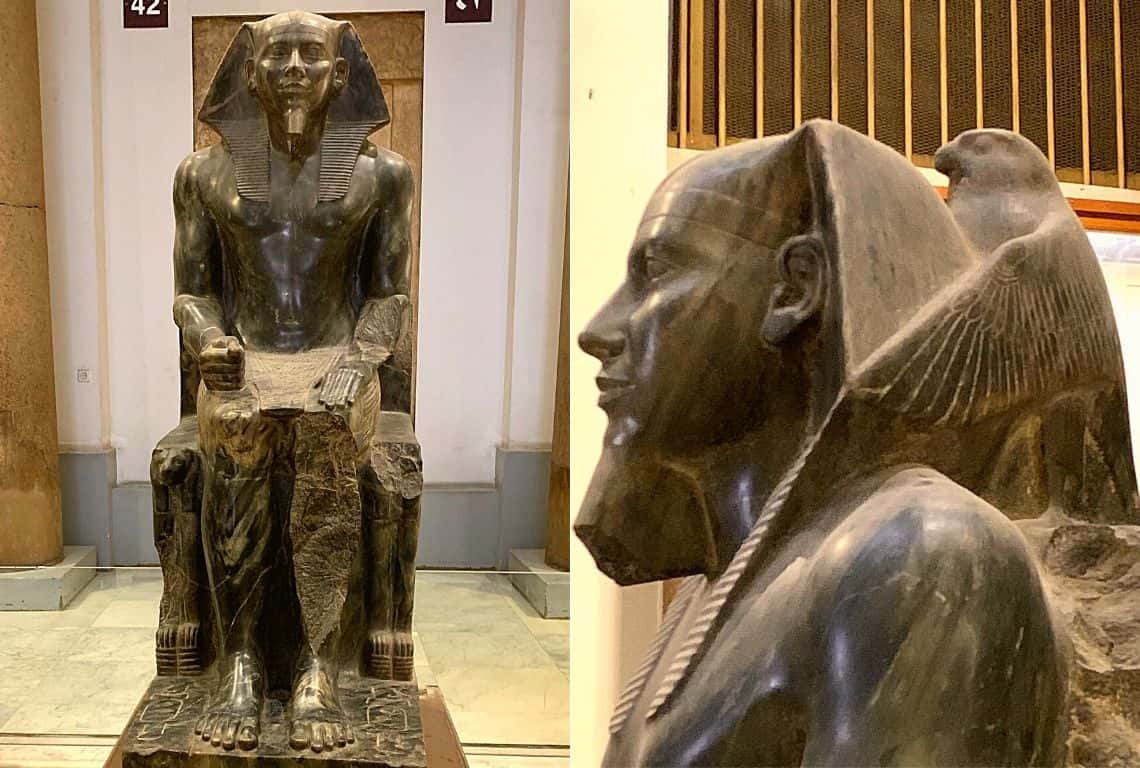
You can see that Khafre is wearing a names headdress. The god Horus, depicted as a falcon, protects the backside of his head with outstretched wings.
Must-See Things at Egyptian Museum
The Statue of Khufu
The ivory Khufu Statuette was found in 1903 by Sir William Matthew Flinders Petrie during the excavation of Kom el-Sultan in Abydos. It depicts Khufu, a Pharaoh of the Fourth Dynasty (Old Kingdom), and the builder of the Great Pyramid.
Interestingly, this small seated figure is the only known three-dimensional depiction of Khufu.
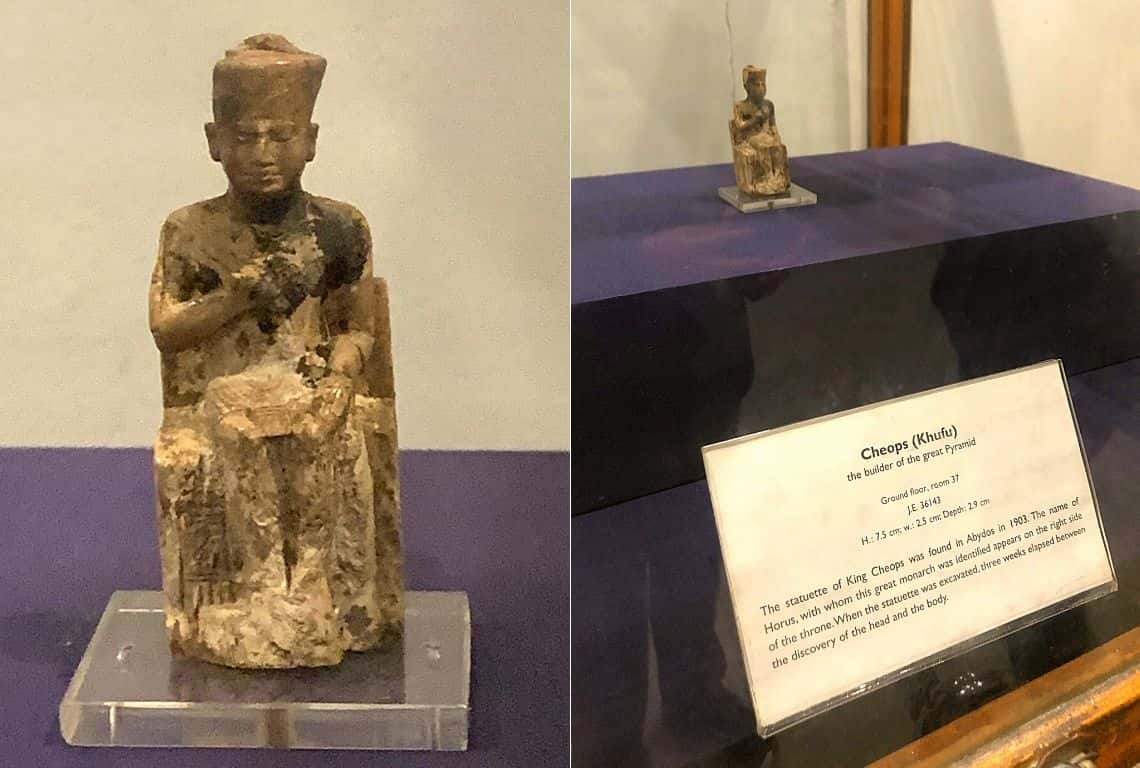
The ivory Khufu Statuette was found in 1903 by Sir William Matthew Flinders Petrie during the excavation of Kom el-Sultan in Abydos.
Must-See Things at Egyptian Museum
The Statues of Prince Rahotep and His Wife Nofret
The seated statues of Prince Rahotep and his wife Nofret were discovered by Albert Auguste Mariette in their brick mastaba at Meidum in 1871.
Rahotep might have been a son of King Senefru and thus, a brother of King Khufu. He held the titles of High Priest of Ra at Heliopolis, General of the Army, and Chief of Constructions.
Nofret is described as “the one acquainted to the king.”
There is definitely a distinction in the skin coloring of the two statues: reddish-brown for the man and cream wash for the woman. This was an artistic convention followed throughout ancient Egyptian history. The colors are well-preserved and the faces have realistic expressions.
The realism in these statues is increased by the glass-inlaid eyes.
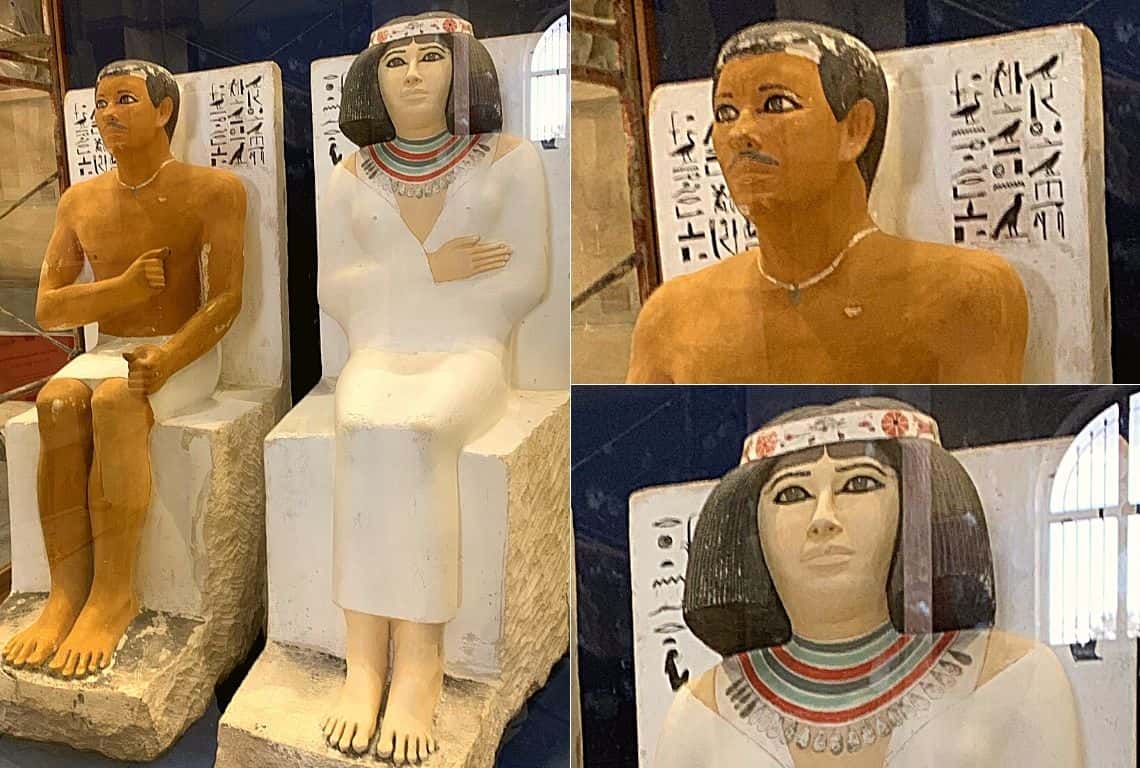
There is definitely a distinction in the skin coloring of the two statues: reddish-brown for the man and cream wash for the woman. This was an artistic convention followed throughout ancient Egyptian history. The colors are well-preserved and the faces have realistic expressions.
Must-See Things at Egyptian Museum
The Colossal Statue of Amenhotep III and Tiye
The centerpiece of the main hall of the Egyptian Museum is the colossal statue of Amenhotep III, his wife Tiye, and three of their daughters.
It is the largest known dyad ever carved.
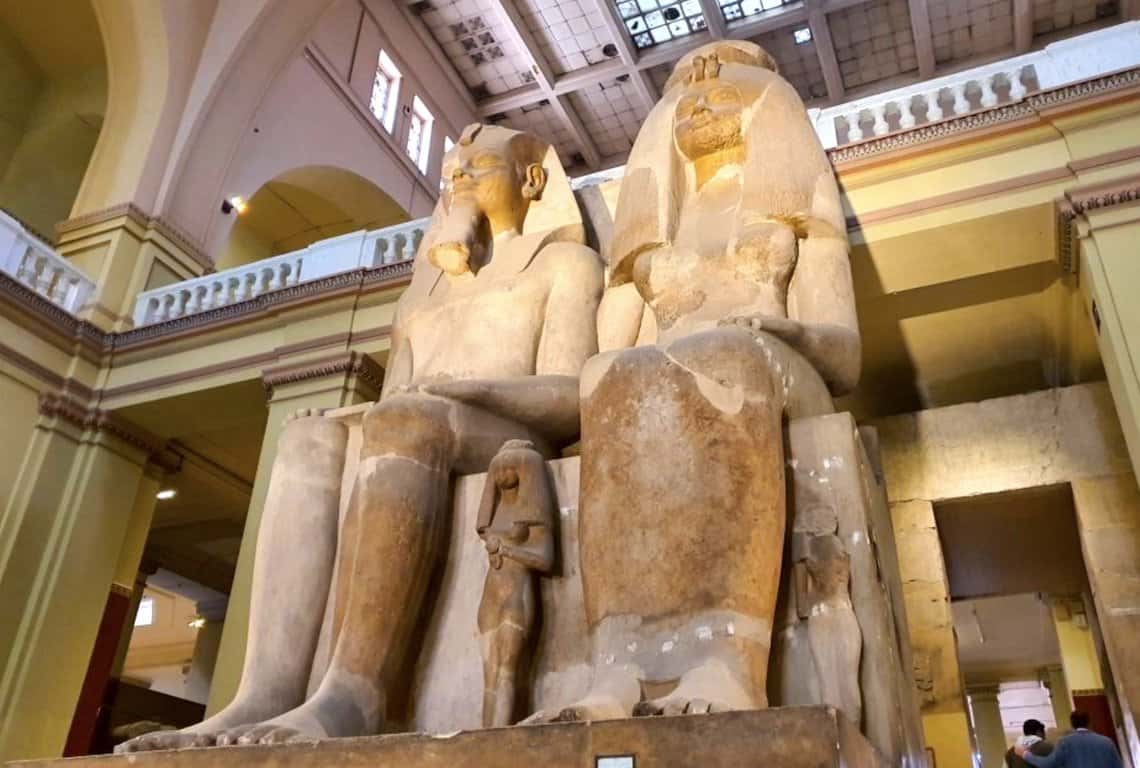
The colossal statue of Amenhotep III, his wife Tiye, and three of their daughters is the largest known dyad ever carved.
Must-See Things at Egyptian Museum
During his time as pharaoh, Amenhotep III built many monuments for himself and the gods.
Perhaps his most famous construction was the Temple of Luxor. What is left of the temple are two giant statues towering around 60 feet tall that show a giant Amenhotep guarding the entrance to the temple. It is known as the Colossi of Memnon and it is one of the things you should not miss if you are visiting Luxor.
Funerary Masks of Yuya and Thuya
The mummies of Yuya and Thuya (husband and wife) were discovered in the Valley of the Kings, Luxor (tomb KV46) in 1905 by James Quibell. Both mummies were wearing cartonnage masks covered with gold leaf.
What is cartonnage? Cartonnage is a type of material used in ancient Egyptian funerary masks from the First Intermediate Period to the Roman era. It was made of layers of linen or papyrus covered with plaster. Source: Wikipedia
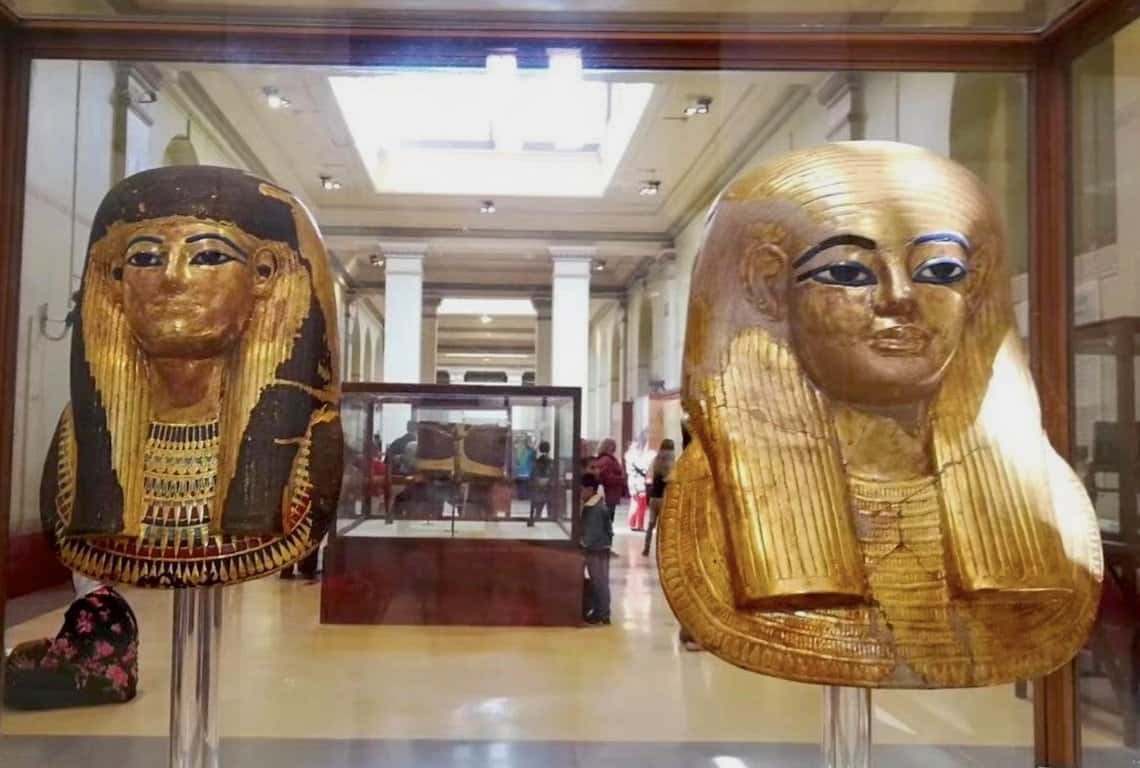
The mummies of Yuya and Thuya were wearing cartonnage masks covered with gold leaf.
Must-See Things at Egyptian Museum
Yuya was a powerful ancient Egyptian courtier during the Eighteenth Dynasty of Egypt. He was the father of Queen Tiye, the wife of king Amenhotep III.
His wife, Thuya held important religious titles, in addition to the title of the Royal Mother of the Great Wife of the King.
The Statue of Seated Scribe
The statue of the Seated Scribe from the 5th Dynasty, 24th Century BC was found in a tomb at Saqqara. It depicts an unknown scribe. The features of the statue have incredible vitality.
First of all, you can he is sitting in a cross-legged position.
He is wearing a black wig that slightly flares up off his shoulders. His white skirt is stretched out and serves as a platform for the scroll.
His hands show incredible detail. In his left hand, he is holding a partly unrolled papyrus roll. His right hand probably held a stylus or reed and is balanced over the open papyrus in the act of writing.
If you look at his face and especially his eyes, you can almost see that he listening intently to the dictation and is ready to write down the next piece of information.
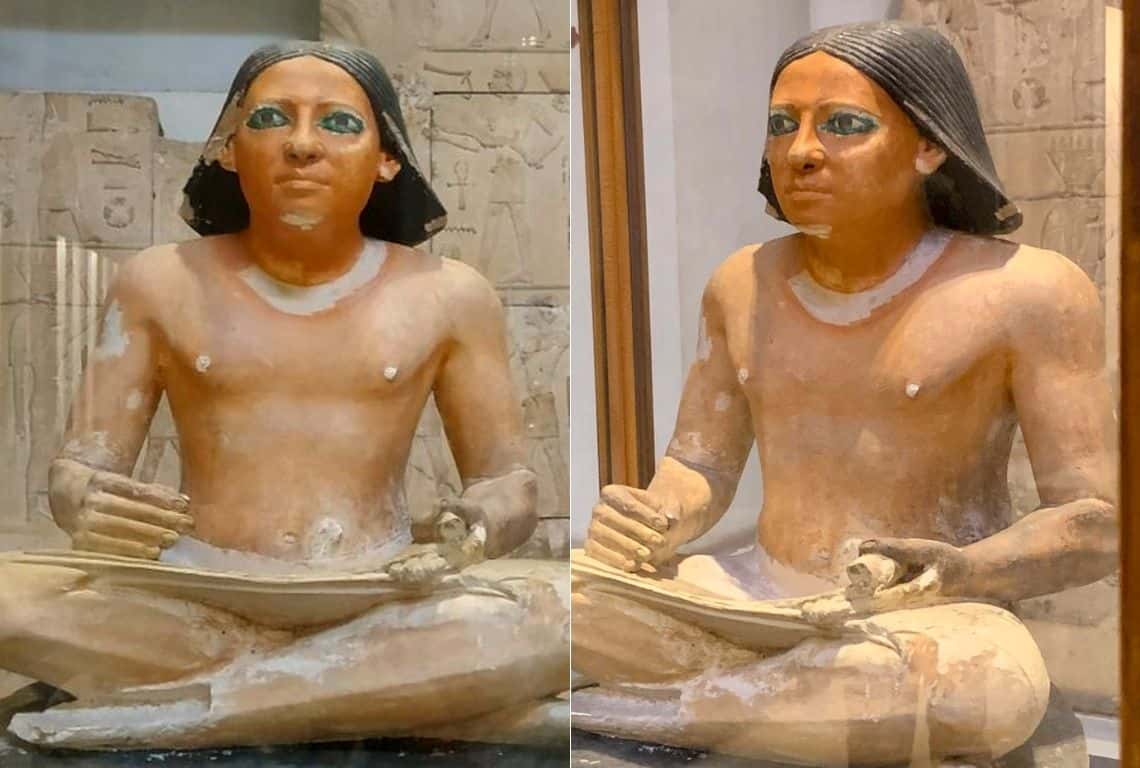
The statue of the Seated Scribe from the 5th Dynasty, 24th Century BC was found in a tomb at Saqqara. It depicts an unknown scribe. The features of the statue have incredible vitality.
Must-See Things at Egyptian Museum
The Gold Chest with Canopic Jars
One of the most amazing items in the Egyptian Museum and part of King Tut’s Rooms is the gold chest that contained four canopic jars.
Howard Carter, who discovered King Tut’s tomb, explains what he saw when he first saw the gold chest:
“Facing the doorway, on the farther side, stood the most beautiful monument that I have ever seen – so lovely that it made one gasp with wonder and admiration. The central portion of it consisted of a large shrine-shaped chest, completely overlaid with gold, and surmounted by a cornice of sacred cobras. Surrounding this, free-standing, were statues of the four tutelary goddesses of the dead – gracious figures with outstretched protective arms, so natural and lifelike in their pose, so pitiful and compassionate the expression on their faces, that one felt it almost sacrilege to look at them.”
Source: Howard Carter, The Discovery of the Tomb of Tutankhamen
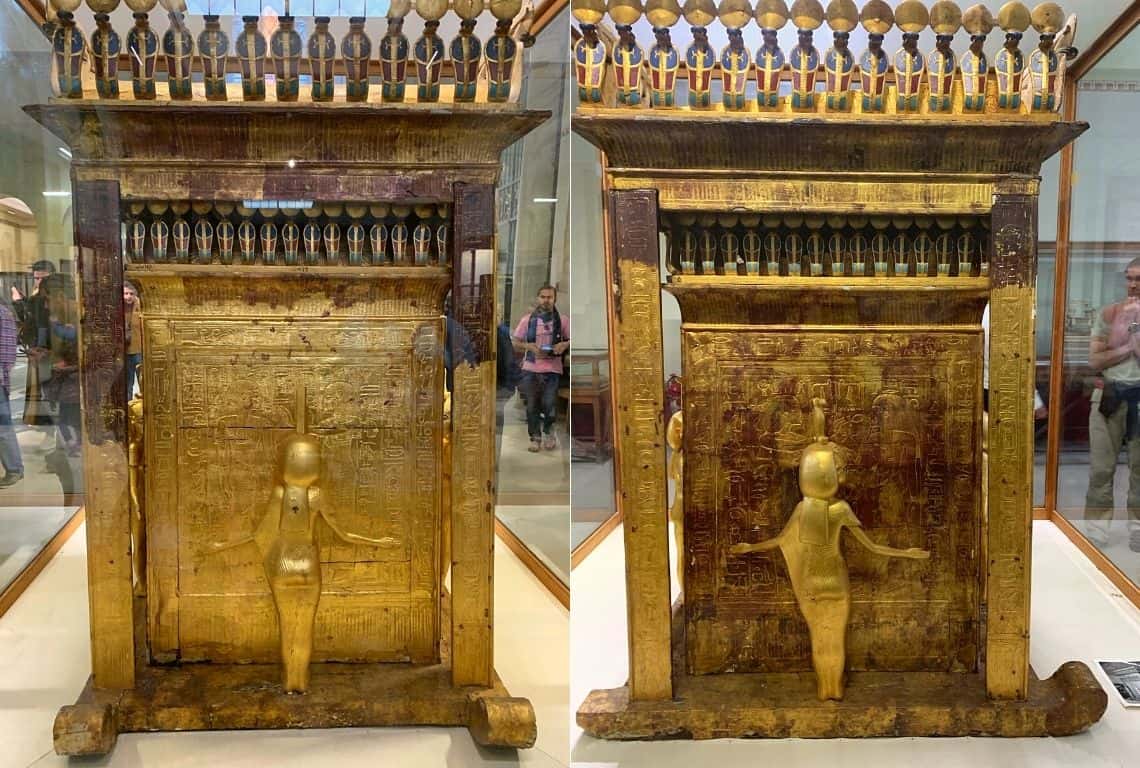
One of the most amazing items in Egyptian Museum and part of King Tut’s Rooms is the gold chest that contained four canopic jars.
Must-See Things at Egyptian Museum
Canopic jars were used by the Ancient Egyptians during the mummification process to store and preserve the viscera of their owner for the afterlife.
Each jar was reserved for specific organs like the stomach, intestines, lungs, and liver, all of which, it was believed, would be needed in the afterlife.
Interestingly, there was no jar for the heart since Egyptians believed it to be the seat of the soul, so it was left inside the body.
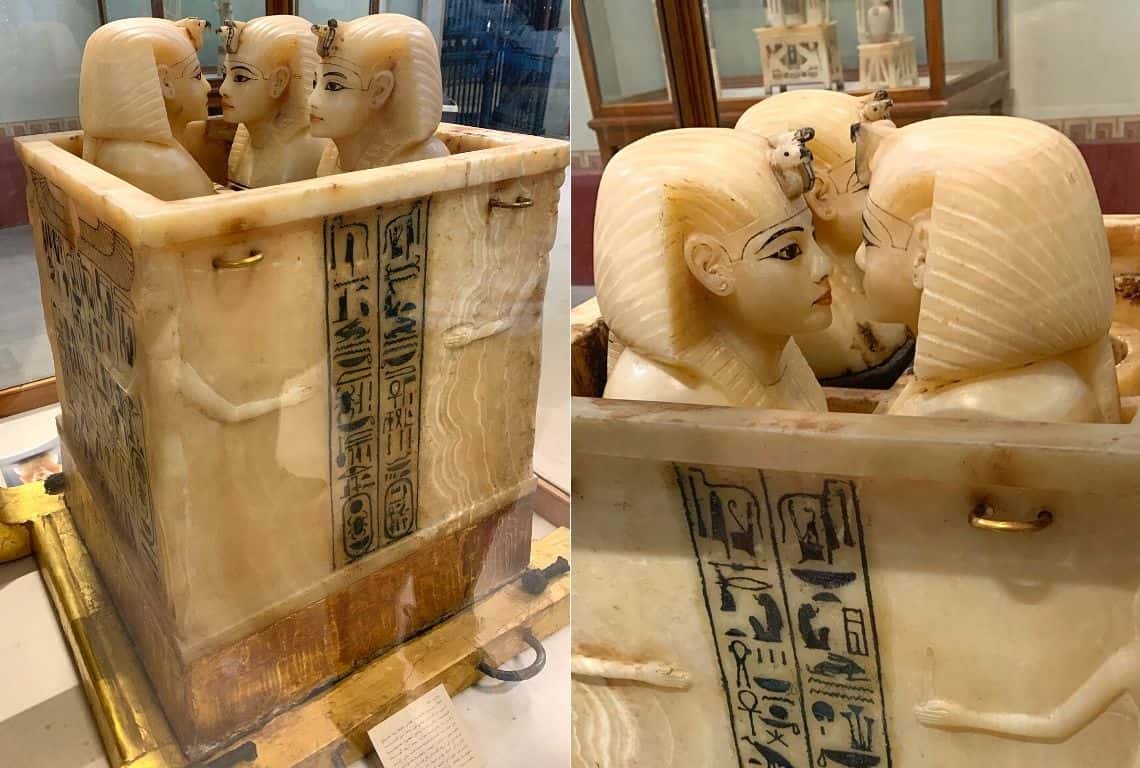
There was no jar for the heart: the Egyptians believed it to be the seat of the soul, and so it was left inside the body.
Must-See Things at Egyptian Museum
The Head of Hatshepsut
I have to honestly say that I am fascinated by the story of Queen Hatshepsut after visiting her funerary temple in Luxor. Through the years, I read everything I could to learn more about her.
Hatshepsut reigned c. 1473–58 BCE. Interestingly, she attained unprecedented power for a woman, adopting the full titles and regalia of a pharaoh.
Strangely, her successor, Thutmose III attempted to remove all traces of Hatshepsut’s rule. Her statues were torn down, her monuments were defaced, and her name was removed from the official king list.
Hatshepsut ceased to exist, until 1822 when the decoding of hieroglyphic script allowed archaeologists to read the inscriptions at the temple of Hatshepsut.
At Egyptian Museum, you can see the head of the statue of Queen Hatshepsut that stood in front of the pillars of the upper colonnade of her funerary temple in Luxor.
The bottom of the Red Crown of Lower Egypt can be still seen.
Also, she had a ceremonial beard in compliance with the iconography expected of a pharaoh.
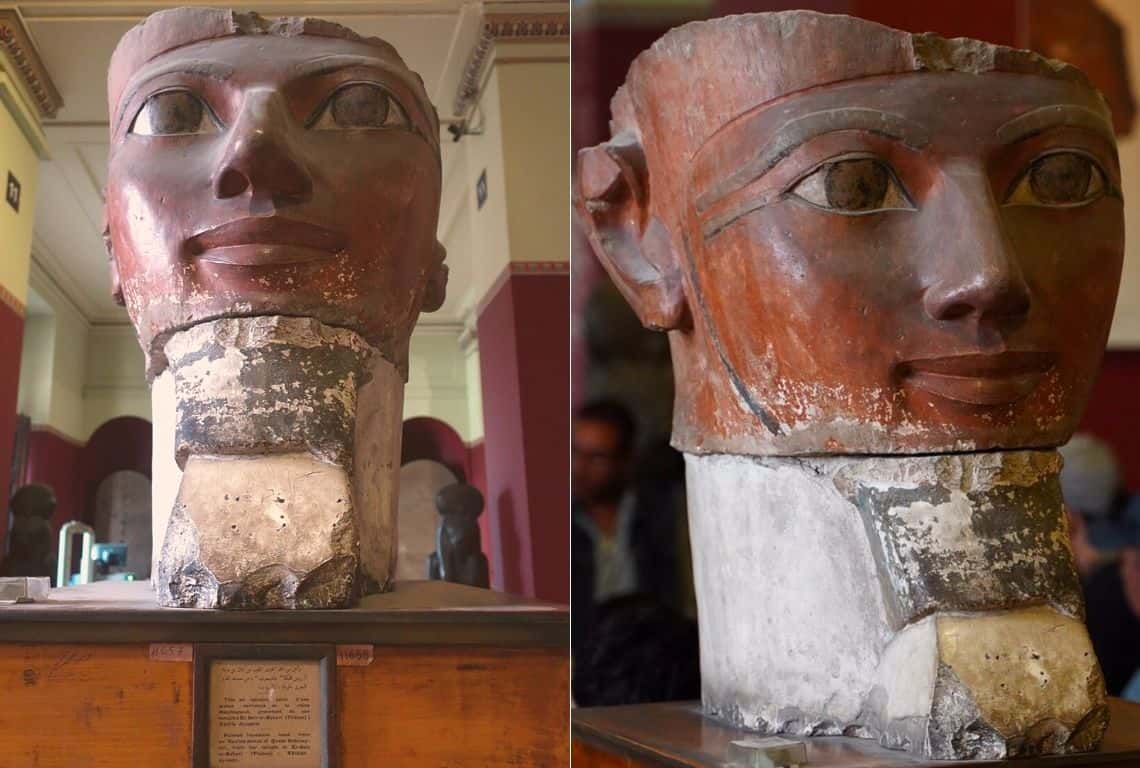
Hatshepsut’s successor, Thutmose III attempted to remove all traces of Hatshepsut’s rule. Her statues were torn down, her monuments were defaced, and her name was removed from the official king list.
Must-See Things at Egyptian Museum
Statue of the Dwarf Seneb And His Family
The statue of the Dwarf Seneb and his Family was found in his mastaba tomb in Giza. The inscriptions on the base and the front of the seat tell us that Seneb was the funerary priest of the deceased king Khufu and Djedefra and was in charge of the royal wardrobe.
What is interesting here, is that you get a look at the Ancient Egyptian family. You see Seneb’s wife giving Seneb an affectionate embrace.
There are also his two children placed below Seneb’s legs.
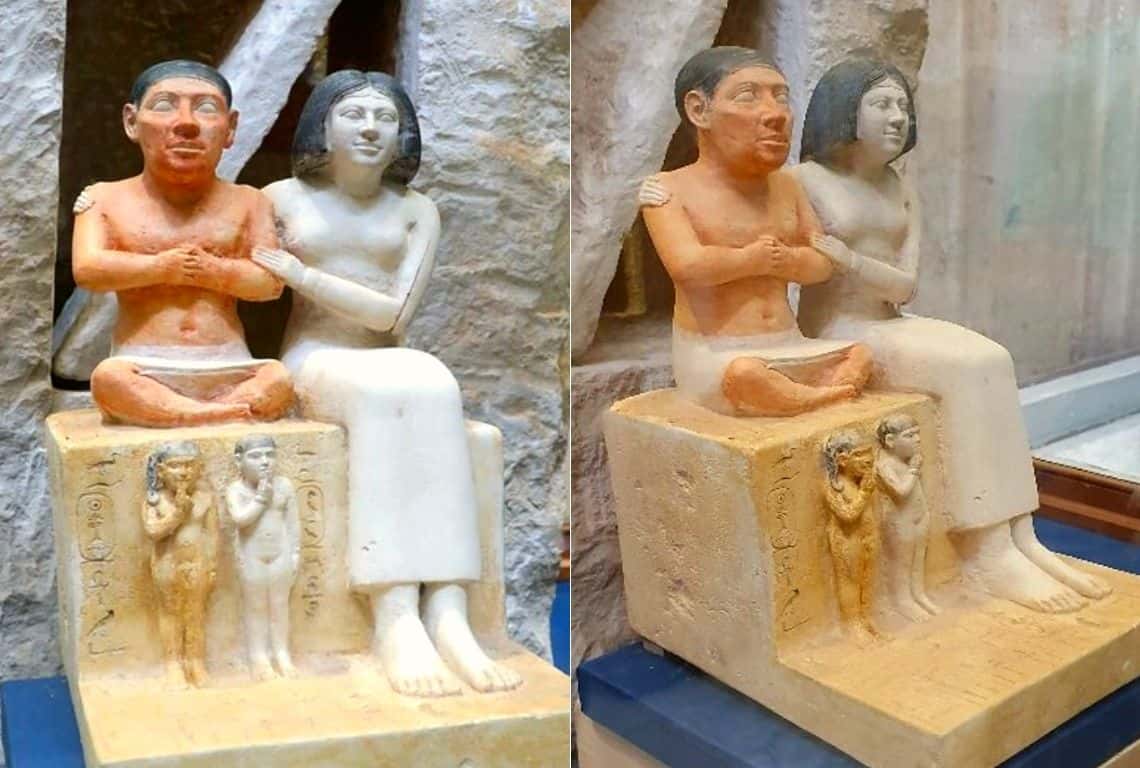
The statue of the Dwarf Seneb and his Family was found in his mastaba tomb in Giza.
Must-See Things at Egyptian Museum
Ancient Egyptian Jewelry
One of the must-see things at Egyptian Museum in Cairo is an incredible display of Ancient Egyptian jewelry. The craftsmanship is exquisite!
Make sure to take a closer look at Pharaoh Psusennes I elaborate gold encasings of his fingers and toes found in his tomb in Tanis.
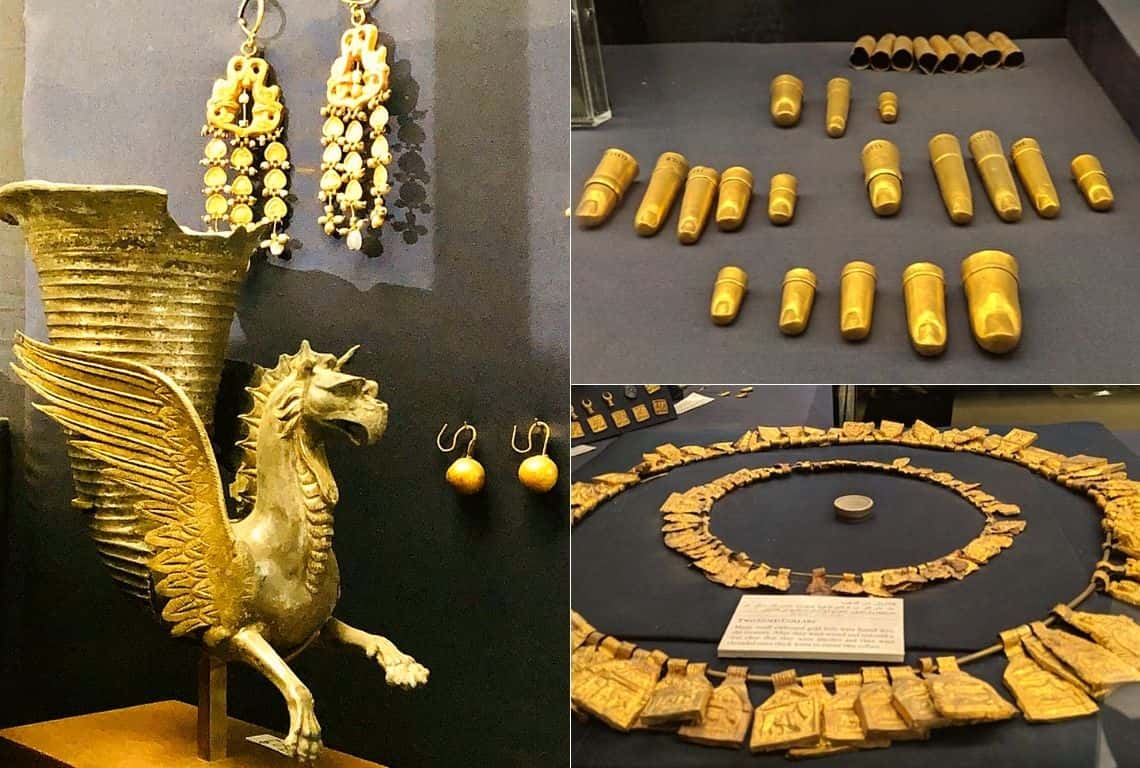
Do not miss the incredible display of Ancient Egyptian jewelry. The craftsmanship is exquisite!
Must-See Things at Egyptian Museum
King Tut's Rooms
King Tut’s Rooms are the highlight of the Egyptian Museum. His funerary assemblage is out of this world!
Tutankhamun’s tomb contained four gilded shrines nested one inside the other. All four of these shrines are on display in the museum. They are lined up in order of decreasing size. The innermost of these covered a stone sarcophagus that remains in the tomb.
Moreover, there are many other treasures from his tomb on display.
Take a look at Anubis. It is not an ordinary jackal. It is Anubis – a god of the afterlife who protected the dead, guarding their spirits into the afterlife, and punished mortals who violated a sacred tomb.
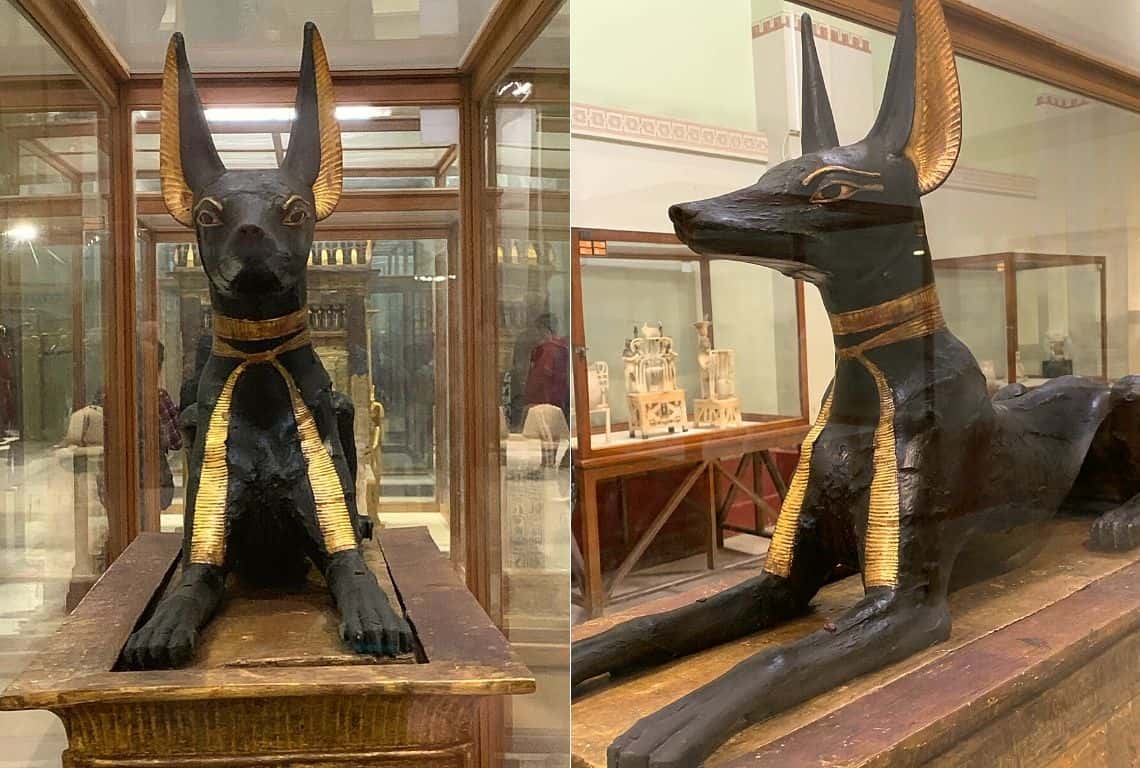
Anubis – a god of the afterlife who protected the dead, guarding their spirits into the afterlife, and punished mortals who violated a sacred tomb.
Must-See Things at Egyptian Museum
The golden throne of King Tut is an amazing piece of furniture. It was done in the Amarna style.
What is Amarna style?
Amarna art, or the Amarna style, is a style adopted in the Amarna Period during and just after the reign of Akhenaten (r. 1351–1334 BC) in the late Eighteenth Dynasty, during the New Kingdom. It is characterized by a sense of movement and activity in images, with figures having raised heads, many figures overlapping and many scenes busy and crowded. The human body is portrayed differently; figures, always shown in profile on reliefs, are slender, swaying, and with exaggerated extremities. Source: Wikipedia
When you look closely at the decorations on the golden throne, you can see Tutankhamun and his wife connected with the arms of Aten, the sun god.
There are also two traditional lions placed at the front of the armrests as well as lion-like feet for the legs of the chair.
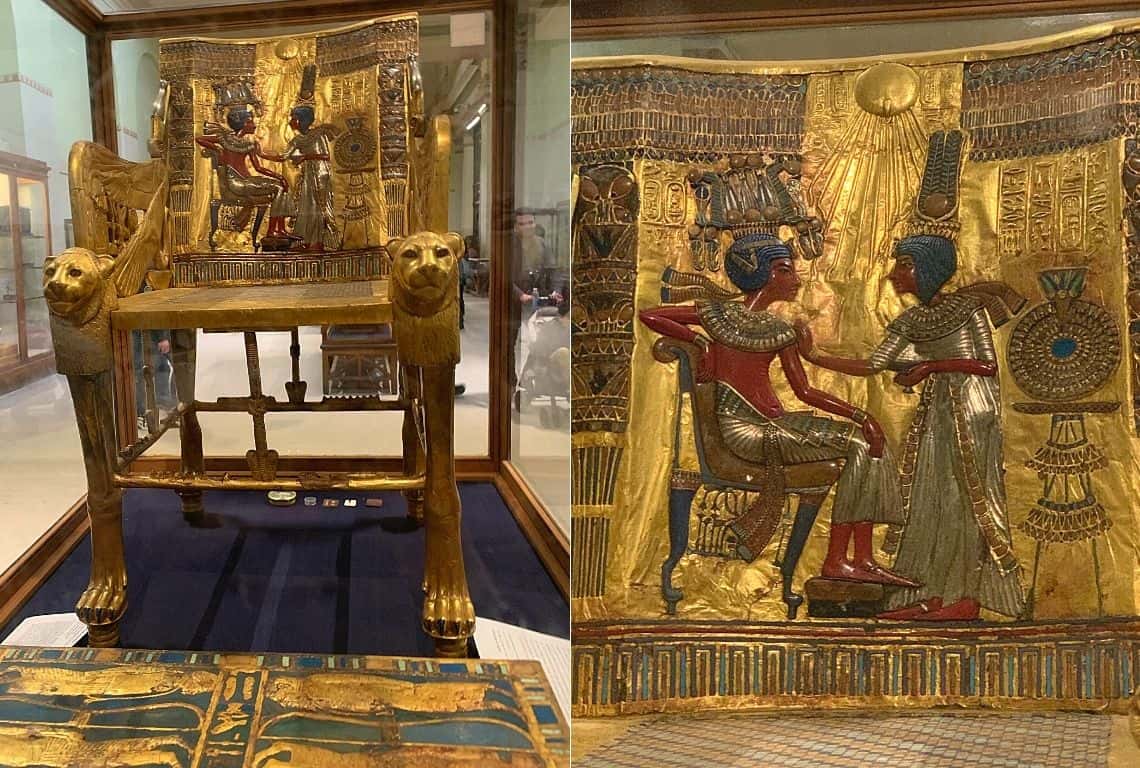
The golden throne is decorated in Amarna style. As you can see the human body is shown in profile, always slender, swaying, with exaggerated extremities.
Must-See Things at Egyptian Museum
Death Mask of Psusennes I
Psusennes I was the third pharaoh of the 21st Dynasty who ruled from Tanis between 1047 and 1001 BC.
His tomb was discovered by Professor Pierre Montet in Tanis in 1940.
Most of the artifacts were destroyed by water, however, Psusennes I’s gold funerary mask was recovered intact.
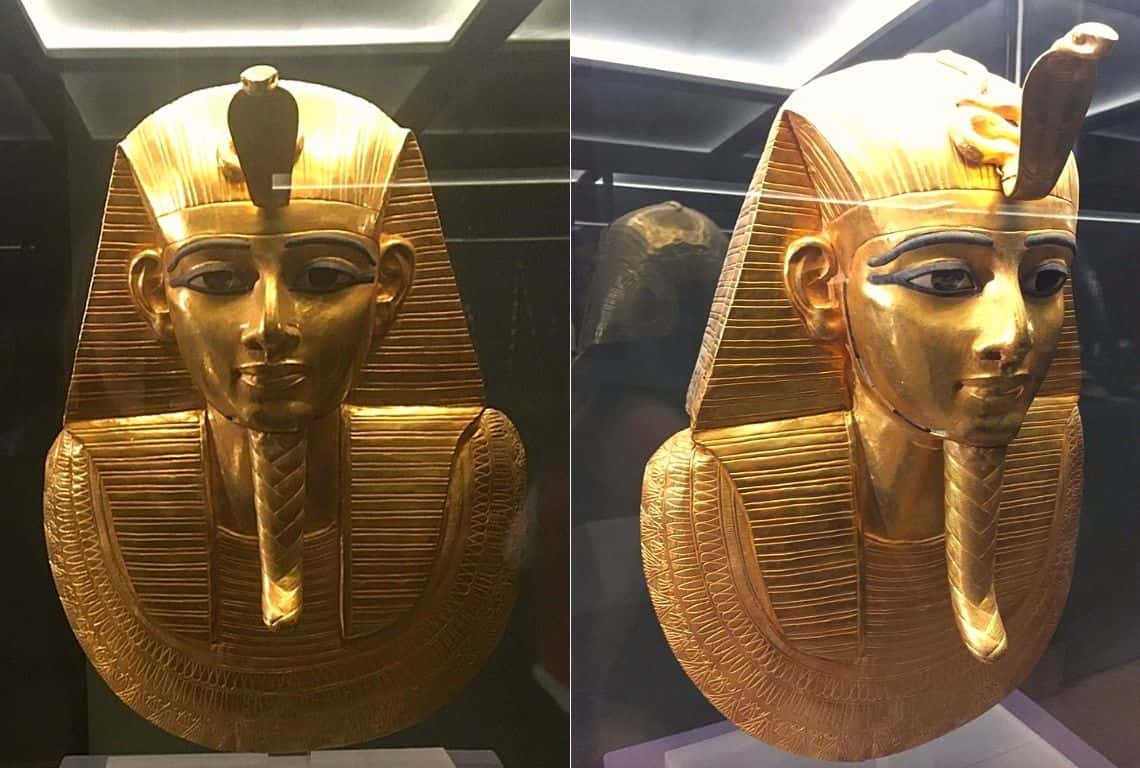
Psusennes I’s mask is considered to be “one of the masterpieces of the treasures of Tanis”.
Must-See Things at Egyptian Museum
Mummy Rooms at Egyptian Museum
The Mummy Rooms are absolutely one of the must-see things at Egyptian Museum.
What you need to know is that death and the afterlife held particular significance and meaning for the ancient Egyptians.
The ancient Egyptians mummified their dead because they believed that the physical body would be important in the next life. Thus, preserving the body in as lifelike a way as possible was the goal of mummification.
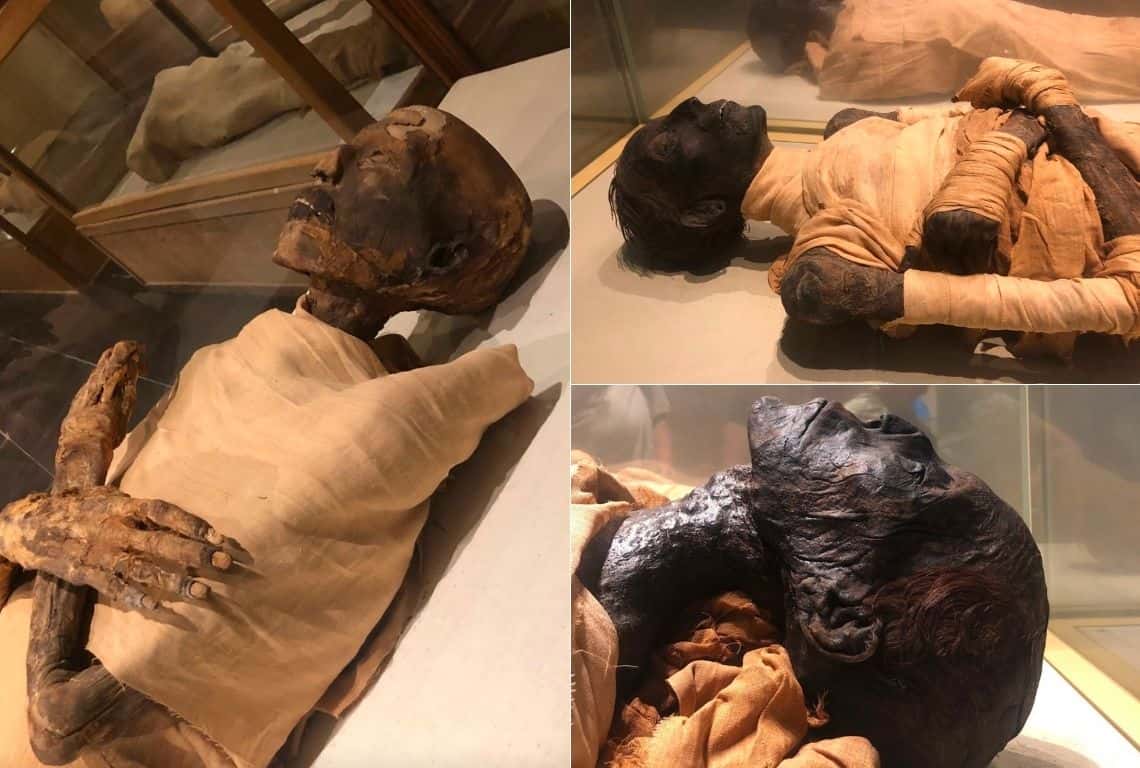
The ancient Egyptians mummified their dead because they believed that the physical body would be important in the next life.
Must-See Things at Egyptian Museum
Using special processes, the Egyptians removed all moisture from the body, leaving only a dried form that would not easily decay.
Next, the wrapping began. Each mummy needed hundreds of yards of linen. The priests carefully wound the long strips of linen around the body, sometimes even wrapping each finger and toe separately before wrapping the entire hand or foot.
Once the mummification process was done, the body was placed in a wooden decorated, human‑shaped coffin, which then was placed inside a larger wooden box or stone coffin called a sarcophagus, which would also be elaborately decorated.
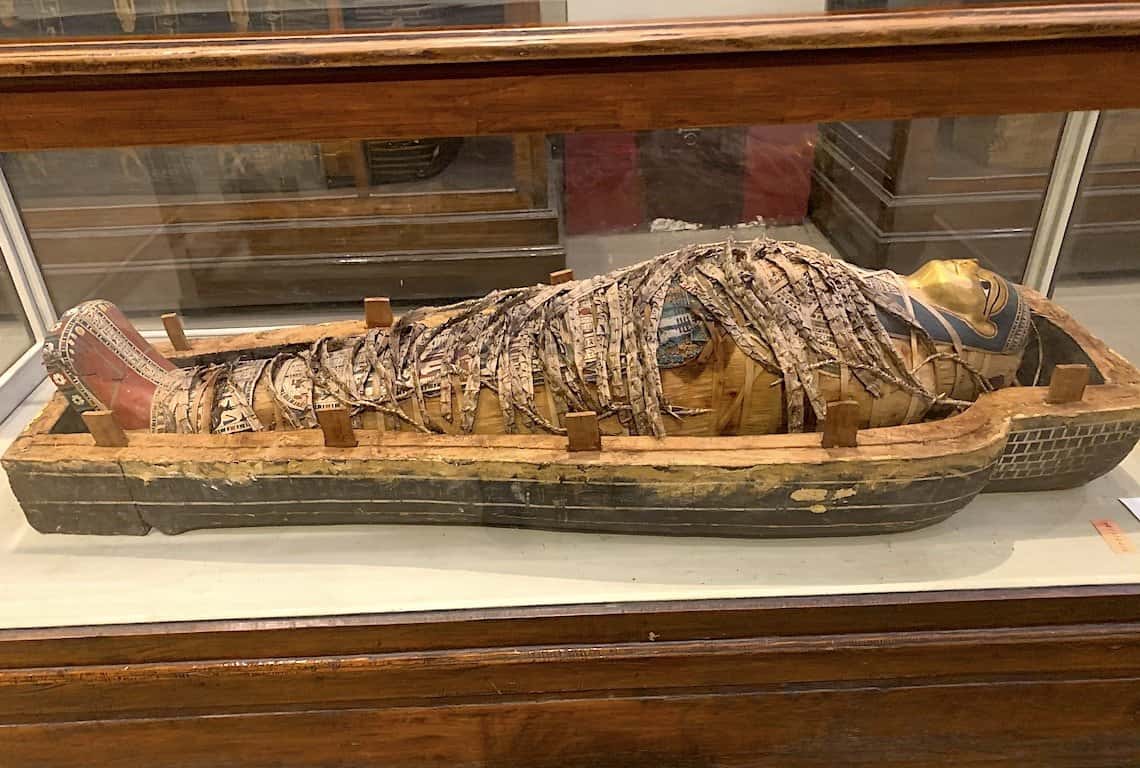
Death and the afterlife held particular significance and meaning for the ancient Egyptians.
Must-See Things at Egyptian Museum
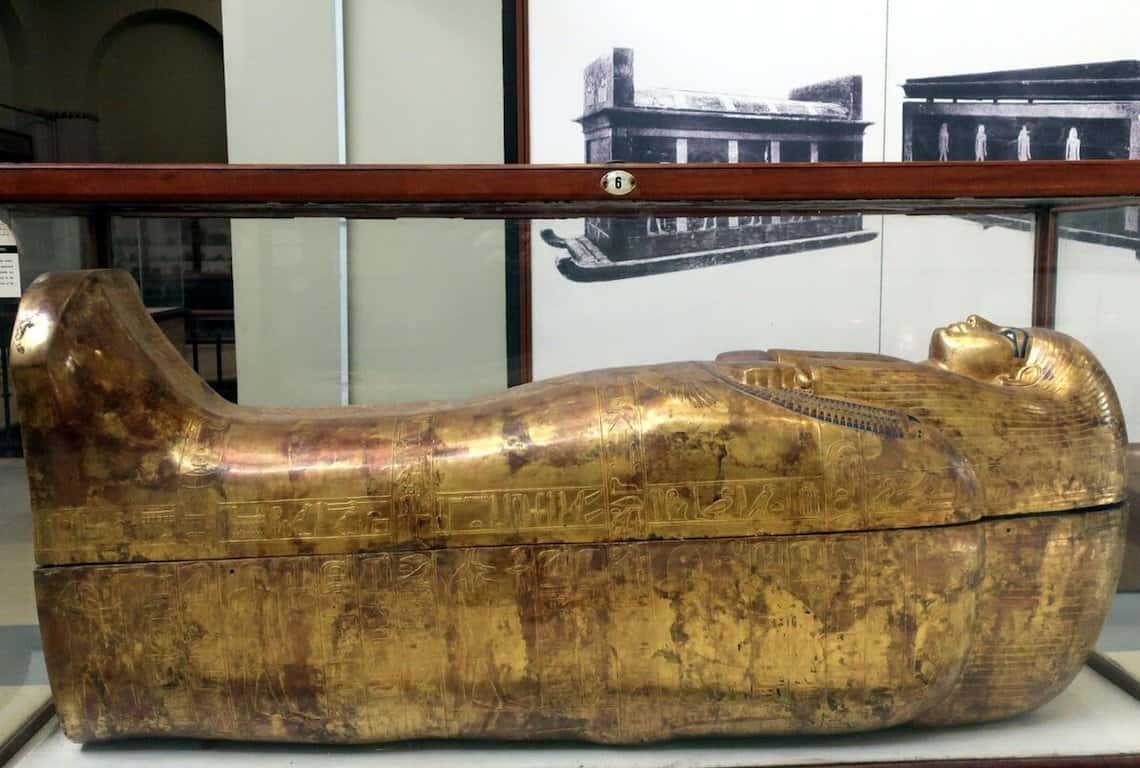
Once the mummification process was done, the body was placed in a wooden decorated, human‑shaped coffin.
Must-See Things at Egyptian Museum
Animal Mummy Rooms at Egyptian Museum
Make sure to check out the Animal Mummy Rooms. They are fascinating!
Did you know that throughout most of their history the ancient Egyptians mummified animals as well as people? It was an enormous part of Egyptian culture.
Animals were typically mummified for three main purposes: to allow beloved pets to go on to the afterlife, to provide food in the afterlife, and to act as offerings to a specific god.
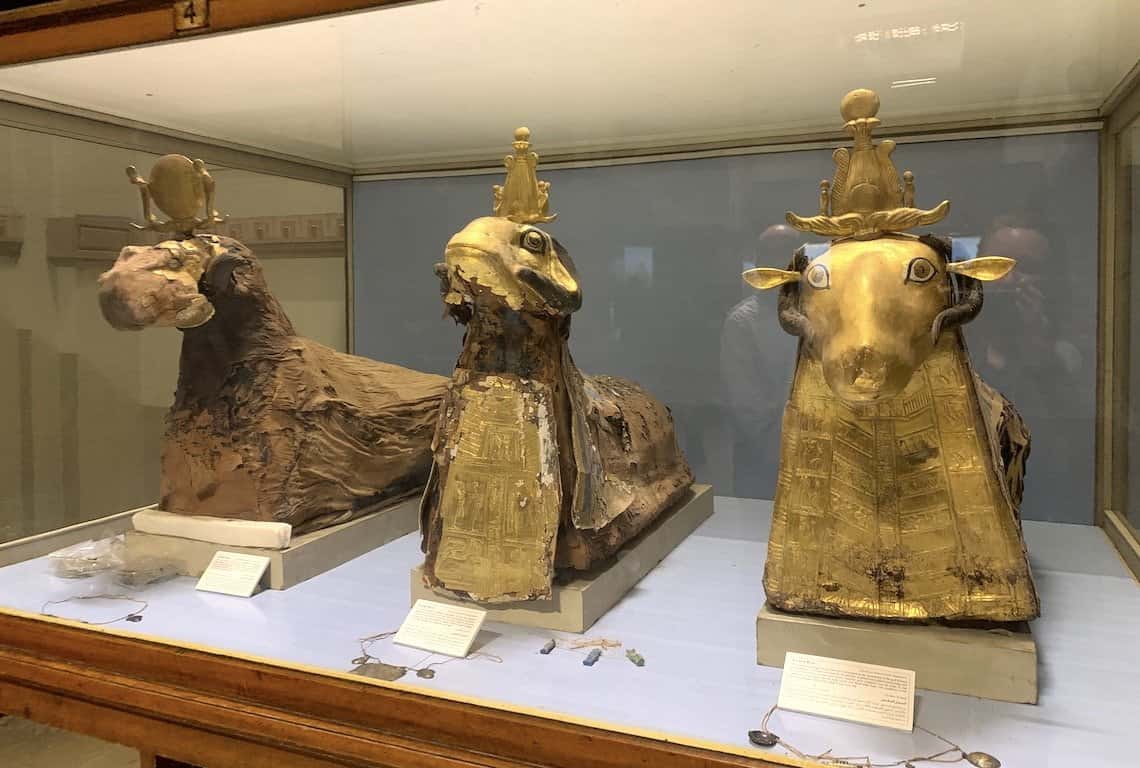
Throughout most of their history, the ancient Egyptians mummified animals as well as people.
Must-See Things at Egyptian Museum
Intrepid Scout's Practical Tips to Know Before You Go to Egyptian Museum
Following are some best practical tips that will definitely help you while you are visiting the Egyptian Museum:
- Egyptian Museum is open every day of the week from 9 am to 5 pm.
- The general entrance ticket costs 160 EGP.
- The entrance ticket to the Royal Mummies Hall costs 180 EGP.
- Purchase a combo ticket that costs 300 EGP and covers the museum and the Royal Mummies Hall.
- If you are a student, then bring your International Student Identification Card and you will be eligible for a discounted ticket (half price). If you do not have ISIC, then bring your regular Student ID Card and ask for a discount anyway.
- The museum does get crowded. The best time to visit is from around 12 pm to 2:30 pm. The crowds thin out in the middle of the day.
- If you arrive at the opening time, which is 9 am, then immediately proceed to King Tut’s Room. It is the highlight of the museum and it is the most crowded area in the museum.
- If possible, schedule your visit on a weekday, instead of on the weekend.
- Egyptian Museum has extended hours on Thursdays and Sundays from 5:30 pm to 8:30 pm.
- If you plan on using your camera to take pictures, then you will need to purchase a photography ticket. It costs 50 EGP. If you’re just using your cellphone to take pictures, then there is no need to buy this extra ticket. In addition, to take videos, you need to purchase a video ticket which costs 300 EGP.
- Keep in mind that the photo-policy changes from time to time. When I was visiting the museum, all cameras had to be left in a camera cloakroom outside the main entrance. It gave me an uneasy feeling, but I had no problems with getting my equipment back after the tour of the museum.
- You do not need a guide to enter and tour a museum. However, having a knowledgeable guide by your side is priceless. There are a lot of guides milling in the front of the museum. If you decide to hire one, then make sure that they are certified. Next, find out how long their tour of the museum is, and finally negotiate the price for their services.
- You will need at least 3-4 hours to see the highlights of the museum.
- Food is not allowed. You can bring a small bottle of water with you.
More Information About Egypt
How to Visit and What to See at KHAN EL-KHALILI BAZAAR in Cairo
Perfect 7-Day Egypt Itinerary for First Visit (Cairo, Aswan, Luxor, Abu Simbel)
What to See at the TEMPLE of HORUS at EDFU (5 Things You Can’t Miss)
10 Epic Things to See and Do at the Pyramids of Giza
What to See at the TEMPLE of KOM OMBO, Egypt (9 Things You Can’t Miss)
How to Visit Abu Simbel: Everything You Need to Know to Plan Your Visit
How to Visit and What to See at the TEMPLE of PHILAE in Aswan
Best Day Trip from Cairo – Dahshur, Memphis, and Saqqara (Maps+Photos)
Now, It Is Your Turn, I Would Like to Hear Back from You!
Are you planning your trip to Egyptian Museum in Cairo?
Please let me know! Drop me a quick comment right below!
Click on any of the images below to get inspired and to help you with the planning process for your trip to Egypt!
Did You Find Must-See Things at Egyptian Museum Useful?
Why Not Save It to Your Pinterest Board!
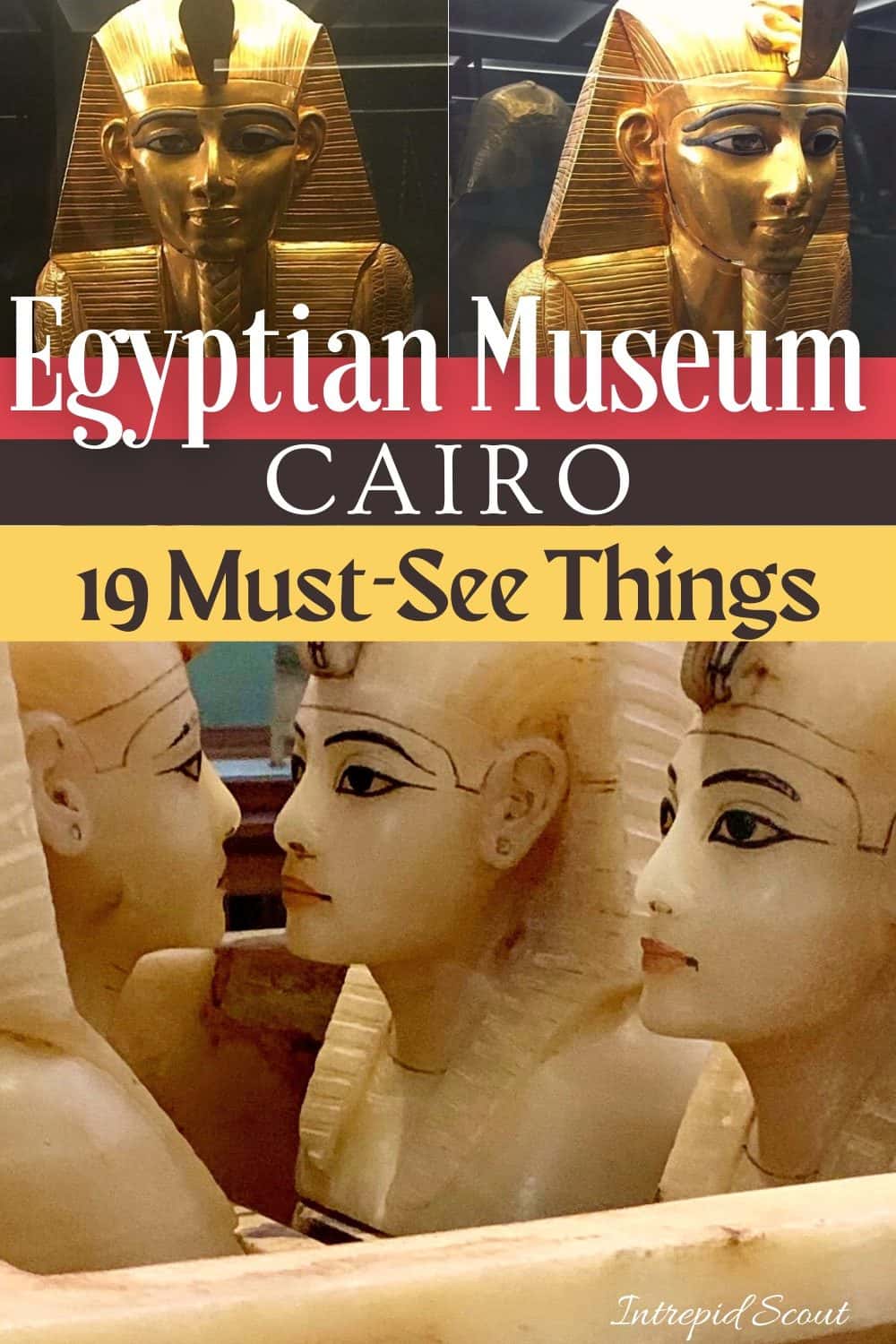
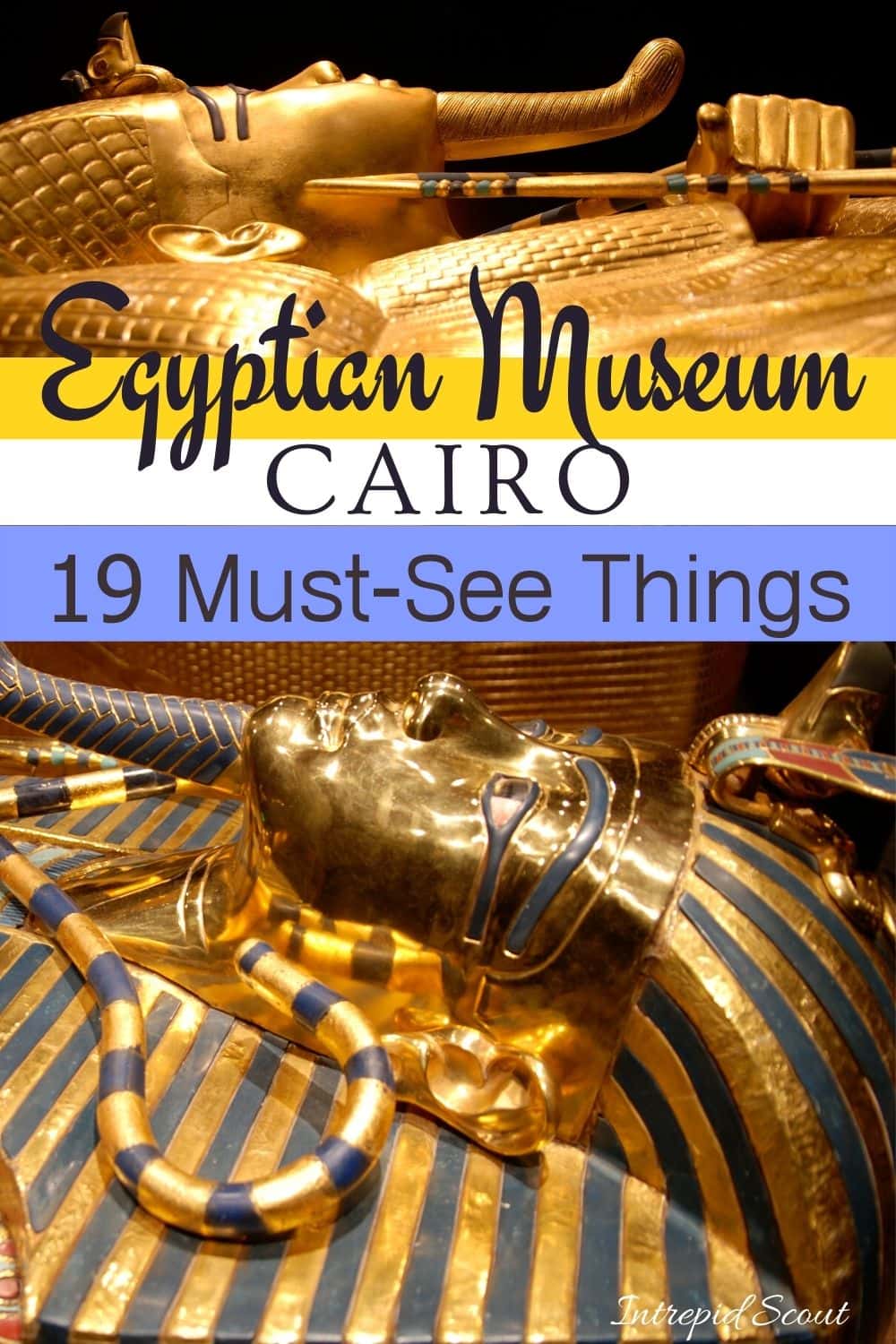
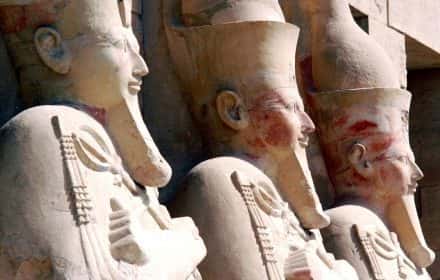
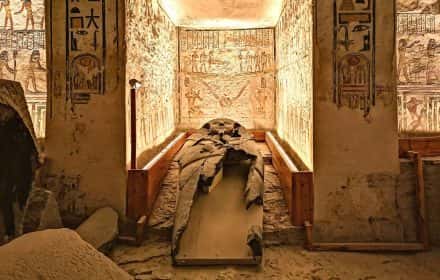
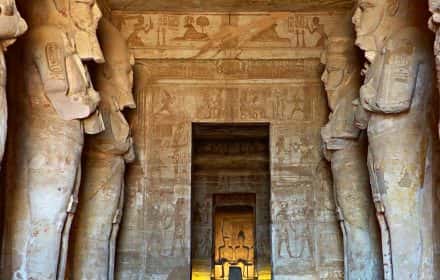
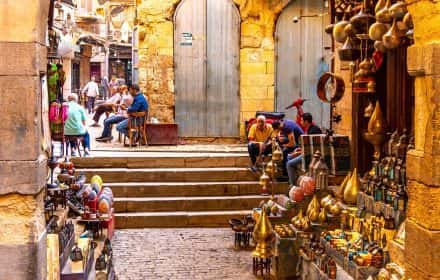
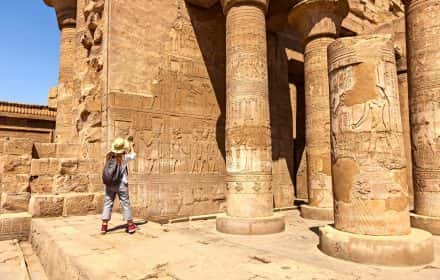
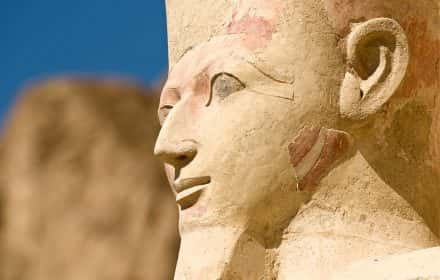
Comments:
13 thoughts on “Amazing 19 Must-See Things at EGYPTIAN MUSEUM, Cairo (+BEST Practical Tips)”
I S:
We are in in Egypt as I write. The site was very helpful in our navigating the multitudinous glorious relics on display. One suggestion for updating – the museum no longer charges for taking photos.
Thank you. I appreciate your kind comment. Rules in Egypt change all the time.
Thank you for posting this wonderful information. Do you know if any or all of these relics are still on display?
Carol, we any or all of these relics on display when you visited in April? I am planning to come in May and want to prepare my expectations.
Carol, how many of the 19 must-see things are still on display at the museum?
This is wonderful information. I see that you posted it a few months ago. Do you know if any or all of these beautiful must-see things are still on display at the (old) Egyptian Museum of Cairo?
Thank you! The new museum is scheduled to open in late 2023. I chatted with my contacts (guides) in Cairo and as far as they know all the items are on display. However, I just want to say that things change fast and without notice in Egypt.
Hi Kelly,
I am getting more responses from my contacts and it looks like nothing can be guaranteed. Hopefully, you will be able to see some of these artifacts. Good luck!
Thank you. Hopefully they have left something to see in the old museum whilst we continue to wait for GEM to open. We have postponed several times in anticipation 🙁
I’m here at the Old Museum today and think we have seen everything on your list. Thanks!
Hi Scott,
I am so glad you got to see everything!
Happy travels!
I just returned from a trip to. Egypt . I wish I had read your posts before I left . You have really shared useful information since our English speaking guide was hard to understand . I will have to visit Egypt again for it all to make more sense.
Thank you for taking the time to let me know.
I think it is a great idea to visit Egypt again!